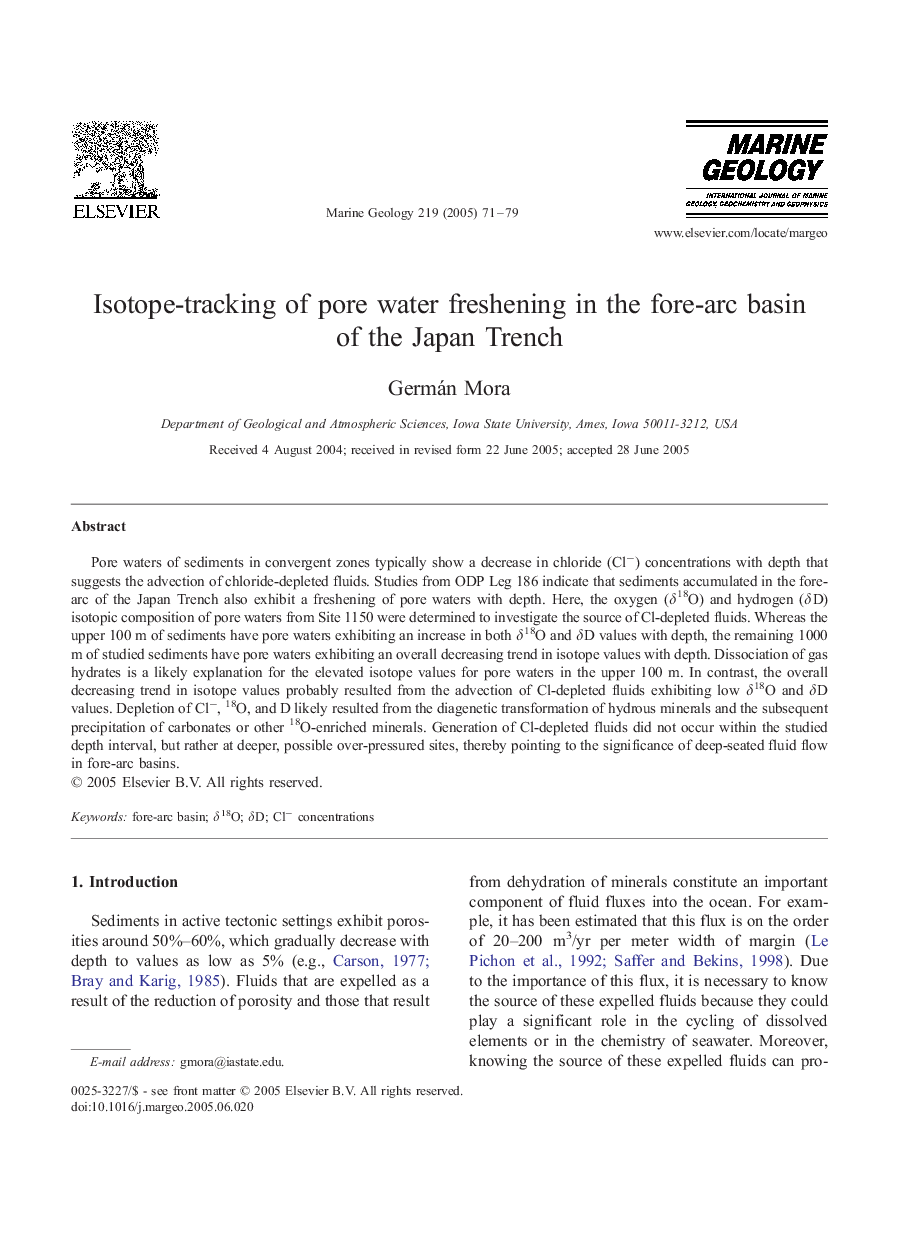| Article ID | Journal | Published Year | Pages | File Type |
|---|---|---|---|---|
| 9532590 | Marine Geology | 2005 | 9 Pages |
Abstract
Pore waters of sediments in convergent zones typically show a decrease in chloride (Clâ) concentrations with depth that suggests the advection of chloride-depleted fluids. Studies from ODP Leg 186 indicate that sediments accumulated in the fore-arc of the Japan Trench also exhibit a freshening of pore waters with depth. Here, the oxygen (δ18O) and hydrogen (δD) isotopic composition of pore waters from Site 1150 were determined to investigate the source of Cl-depleted fluids. Whereas the upper 100 m of sediments have pore waters exhibiting an increase in both δ18O and δD values with depth, the remaining 1000 m of studied sediments have pore waters exhibiting an overall decreasing trend in isotope values with depth. Dissociation of gas hydrates is a likely explanation for the elevated isotope values for pore waters in the upper 100 m. In contrast, the overall decreasing trend in isotope values probably resulted from the advection of Cl-depleted fluids exhibiting low δ18O and δD values. Depletion of Clâ, 18O, and D likely resulted from the diagenetic transformation of hydrous minerals and the subsequent precipitation of carbonates or other 18O-enriched minerals. Generation of Cl-depleted fluids did not occur within the studied depth interval, but rather at deeper, possible over-pressured sites, thereby pointing to the significance of deep-seated fluid flow in fore-arc basins.
Keywords
Related Topics
Physical Sciences and Engineering
Earth and Planetary Sciences
Geochemistry and Petrology
Authors
Germán Mora,
